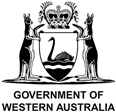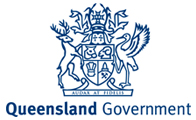Additional information and guidance related to water quality
The Water Quality Guidelines includes additional guidance to help users better understand our advice about guideline values for the community values of waterways in Australia and New Zealand.
Draft Australian Anti-Fouling and In-Water Cleaning Guidelines
These guidelines provide best-practice approaches for the application, maintenance, removal and disposal of anti-fouling coatings and the cleaning of biofouling on vessels and movable structures in Australia. The guidelines aim to minimise contamination and biosecurity risks associated with shore-based and in-water maintenance of vessels and movable structures.
These guidelines contain the Australian in-water cleaning standards, which provide regulators with a voluntary decision-making framework to support their assessment of the biosecurity and chemical contamination risks of in-water cleaning of biofouling from vessels in Australian territorial seas.
Submit a response
To provide feedback on the draft Australian Anti-Fouling and In-Water Cleaning Guidelines during its 4-month public comment period, you must complete our submission form and email it to waterquality@dcceew.gov.au.
The closing date for public submissions is 1 March 2025.
Read the Exposure draft.
Evaluating multiple pressures and stressors
Ideally, an assessment of lines of evidence should involve minimal best professional judgment so independent assessors can reach the same conclusions. Our guidance helps evaluate multiple lines of evidence in a weight of evidence assessment and provides evaluation methods for multiple pressures and stressors.
Find out about:
Effects-based physical and chemical stressor guidance
Global interest is growing in the development of guideline values for physical and chemical (PC) stressors based on field-effects data or laboratory-effects data. Our default approach in the Water Quality Guidelines is to use reference-site data but we discuss new approaches, such as toxicity-based guideline values for salinity and dissolved oxygen.
Find out about:
Groundwater guidance
Groundwater is an essential water resource for many aquatic, riparian and terrestrial ecosystems. Default Guideline Values for groundwater ecosystems have not been developed, but we have provided some general information and guidance on how the Water Quality Guidelines can apply to groundwater.
Find out about:
Physical and chemical stressor guidance
Guidance provided on PC stressors is currently being updated for currency. It is based on the fact sheets and guideline packages in Volume 2 of the ANZECC & ARMCANZ (2000) guidelines.
Find out about:
Stressors unrelated to water quality
When assessing water quality, you need to consider whether and how non-water quality related pressures and stressors might be contributing to or even driving changes to the system, particularly to biodiversity. Considering such pressures and stressors is critical so you can attribute measured responses of indicators to the correct cause.
Find out about:
Protocols for biological assessment
Our protocols for biological assessment presents over 20 methods for sampling biological indicators including ecogenomics techniques. Most of the information has been taken from the ANZECC & ARMCANZ (2000) guidelines and updated for currency.
Find out about:









